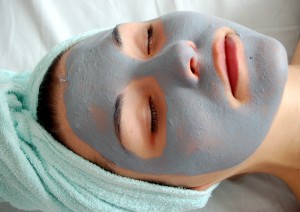 The skin has many layers. Skin cells are formed deep within the skin itself and as the cells mature, they make their way toward the surface of the skin. In fact, the outermost layer of skin is actually made up of dead skin cells that had migrated from deeper layers. A chemical peel removes the outer layers of skin to reveal younger skin beneath, literally. Not only are the skin cells younger because they were “born” more recently than skin cells in outer layers, but the skin that remains after a chemical peel appears younger and smoother.
The skin has many layers. Skin cells are formed deep within the skin itself and as the cells mature, they make their way toward the surface of the skin. In fact, the outermost layer of skin is actually made up of dead skin cells that had migrated from deeper layers. A chemical peel removes the outer layers of skin to reveal younger skin beneath, literally. Not only are the skin cells younger because they were “born” more recently than skin cells in outer layers, but the skin that remains after a chemical peel appears younger and smoother.
Ultraviolet light from the sun and the ravages of time make the skin appear old. The skin becomes lax, discolored, wrinkled, and blotchy however most of the physical entities that cause these blemishes reside in the outer layers of skin. The more layers of skin that rest on top of scars, folds, and wrinkles, the deeper they appear. By extension, these blemishes are more noticeable and unappealing. Thus by chemically removing the outer layers of skin, scars and wrinkles are minimized. Also, discolorations and blotches appear less intense compared to the surrounding skin.
There is really nothing glamorous about a chemical peel. Often the substance used to remove the outer layers of skin is some sort of acid. What is actually occurring in a chemical peel is that the peel is disrupting the connections between skin cells and actually destroying the cells themselves. Stronger agents, like phenol, rapidly destroy skin cells while milder agents, like alpha-hydroxy acid (AHA), simply create an inhospitable environment for skin cells causing the cells to slough off eventually.
The depth of the peel is important. Certain chemical peels such as phenol can penetrate deep within skin layers. The more concentrated the phenol, the deeper it delves into the skin. This type of chemical peel can remove a significant depth of skin. Superficial chemical peels, on the other hand, cannot penetrate the skin as deeply, regardless of concentration. Even repeated treatments with a superficial chemical peel cannot reach the depth of a deep chemical peel. On the other hand, deep chemical peels are more painful, leave the skin red and possibly irritated, and expose the skin to more environmental insults until newer skin cells take the place of older ones. For example, people that have had a phenol chemical peel may need months to fully recover.
While chemical peels do not cause enough pain to require anesthesia, most providers will numb the skin with a topical anesthetic prior to the procedure. There are usually no needles required for this type of anesthesia—the anesthetic is sprayed or slathered on the face and allowed to penetrate to nerve endings and silence them.
Chemical peeling has been around since the early 1900s and has been performed by laypeople and medically-trained personnel since the beginning. In fact, the earliest practitioners of chemical peeling were laymen. Plastic surgeons and dermatologists did not widely incorporate the technique into practice until the 1960s. As a result of this history, chemical peels are not regulated by most state medical boards. Therefore the guidelines that dictate who can perform these peels are vague. On the one hand, alpha-hydroxy acid is available in many over-the-counter make-ups and lotions. On the other hand, if you require anesthetic prior to a deep chemical peel, only a licensed physician will be able to properly oblige.
